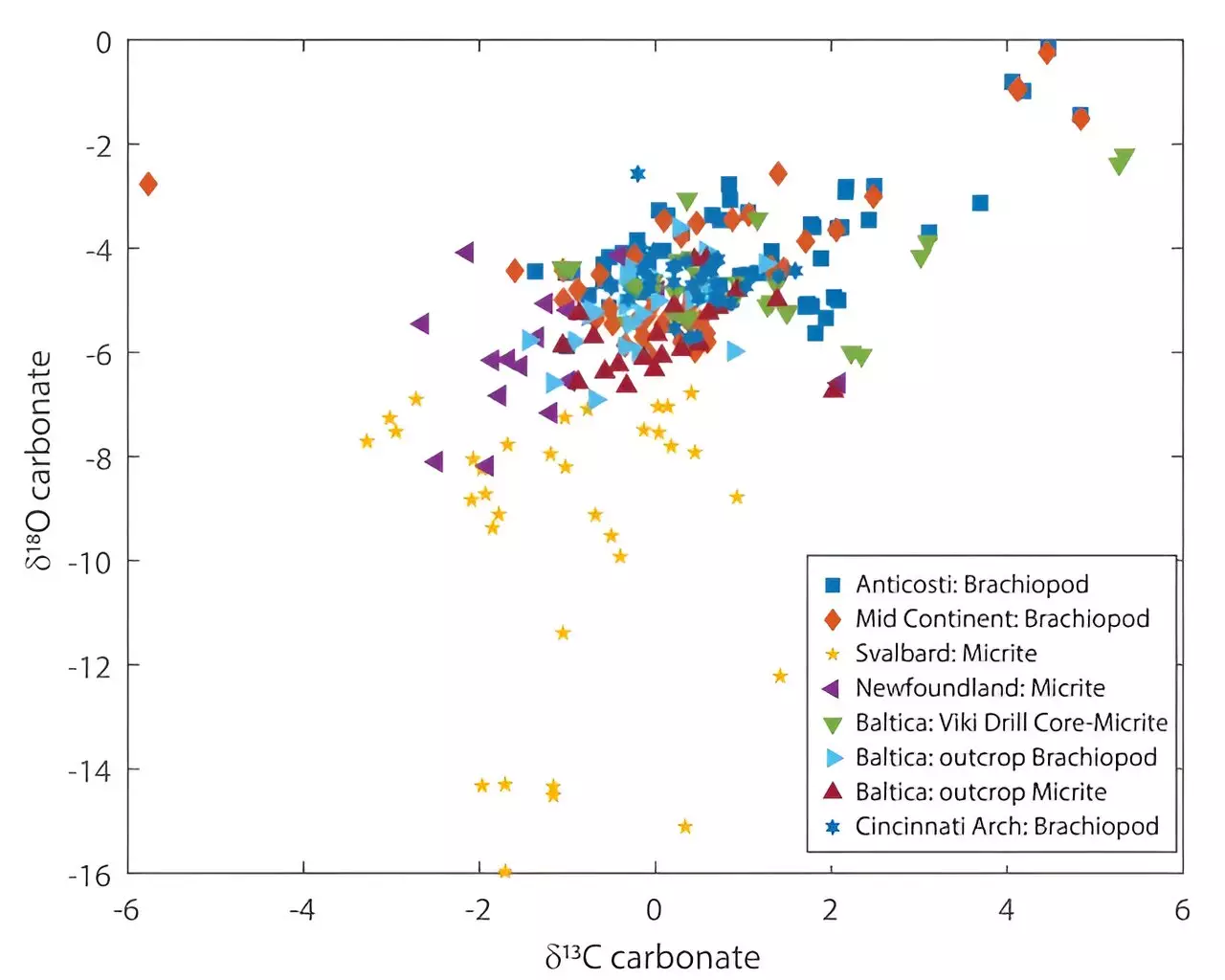For decades, scientists have been embroiled in a heated discussion regarding the shifts in the oxygen isotope ratios found in seawater over the course of 540 million years. It is specifically the ratio of two isotopes, 16O and 18O, denoted by the symbol δ18O, that has piqued the interest of researchers specializing in oceanography and Earth sciences. Recently, an international team of marine scientists presented new evidence that could tilt the balance in favor of the theory that these ratios have, in fact, undergone significant changes.
The focal point of this investigation was the Ordovician period, a time roughly 485 to 444 million years ago. A key challenge for earth scientists has been the inconsistency of evidence concerning δ18O ratios, leading to diverging conclusions. Some researchers staunchly assert that the ratios remain static over geological time, while others have gathered data hinting at a gradual increase. The recent findings published in the prestigious Proceedings of the National Academy of Sciences aim to contribute clarity to this intricate debate.
To examine the historical changes in seawater’s oxygen isotope ratios, the team examined drill core samples from Estonia’s Baltic basin alongside surface rock samples from the same area. This methodological approach, incorporating clumped isotope thermometry, offers a ground-breaking technique to retrieve reliable ocean temperature estimates based on the binding of specific carbon and oxygen isotopes within carbonate minerals.
The analysis yielded surprising results: the rock samples suggested a lower δ18O ratio compared to earlier predictions, indicating that the seawater temperature during the Ordovician was cooler than previously thought. This vital insight sheds light on the dynamic equilibrium of ocean conditions throughout Earth’s history, affirming that fluctuations in seawater chemistry are likely reflective of broader geological processes.
Moreover, the research hypothesizes that there are principal factors leading to variations in the oxygen isotope ratio. Two key contributors highlighted are hydrothermal activity—where heated water interacts with rock formations—and, to a lesser extent, the weathering of continental crust. Both processes can influence the isotopic content of seawater and, by extension, inform scientists about climate conditions from eons past.
While this study adds weight to arguments supporting changes in the seawater oxygen isotope ratio, it does not provide irrefutable proof. The scientific community remains divided, and this ongoing inquiry beckons the necessity for further evidence to substantiate the team’s claims. It becomes clear that our understanding of Earth’s climatic history hinges on resolving such debates.
This research stands as a significant milestone in the quest to unravel the complexities of Earth’s oceanic past. It opens avenues for future exploration and raises critical questions about the interactions between geological events and marine chemistry. As our tools and techniques continue to evolve, new chapters in Earth’s history await discovery, enriching our understanding of the planet’s long-term climate dynamics.

